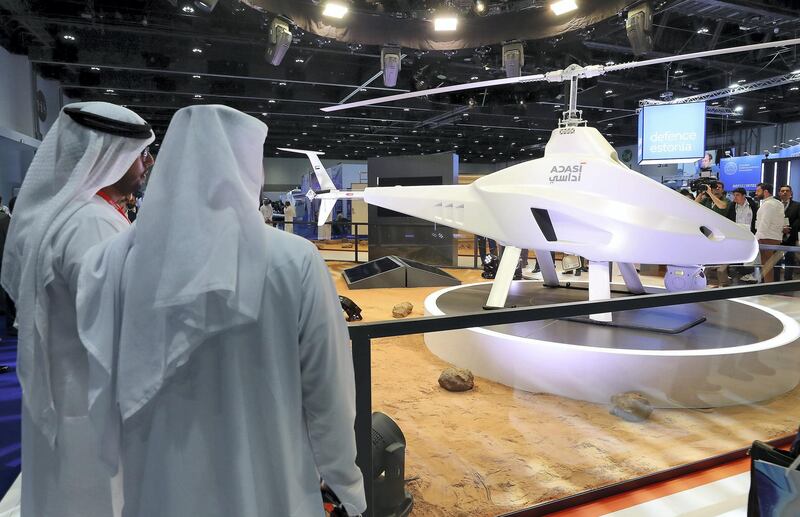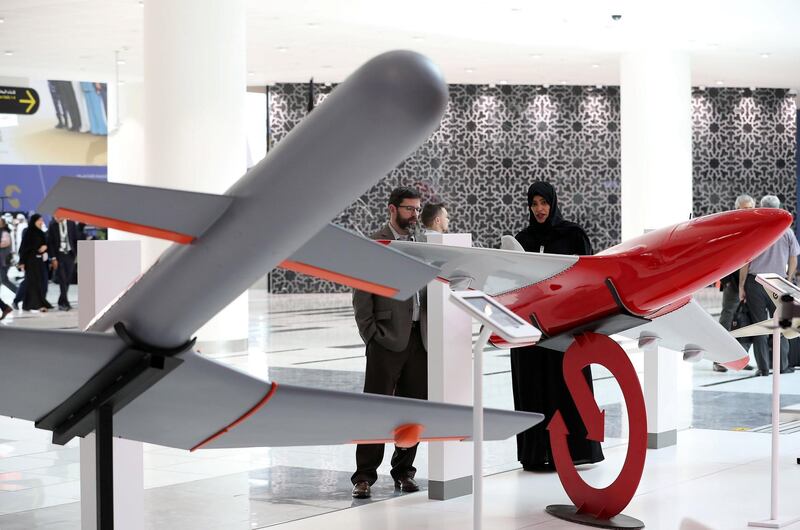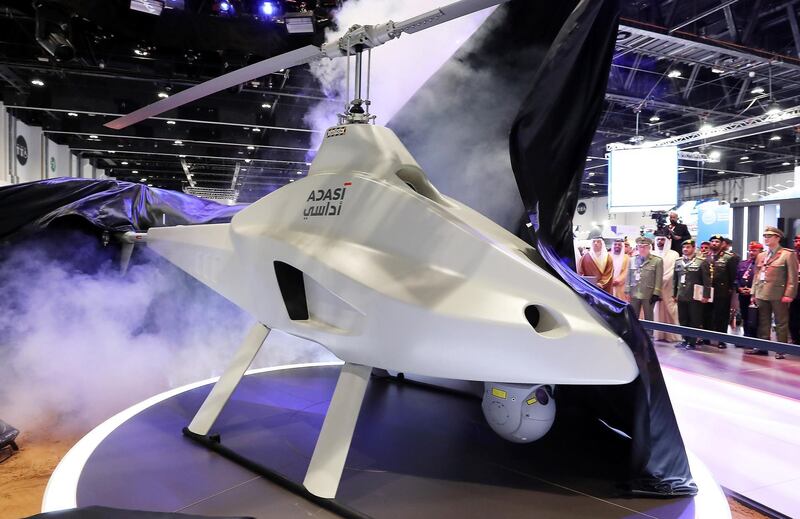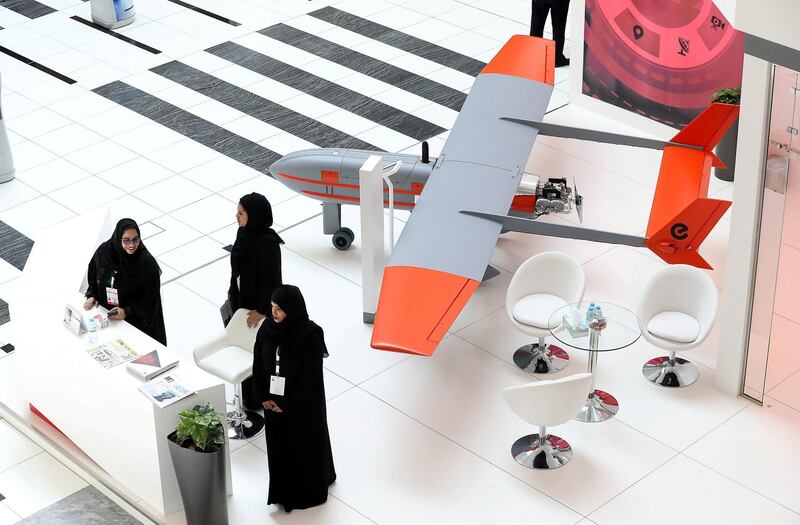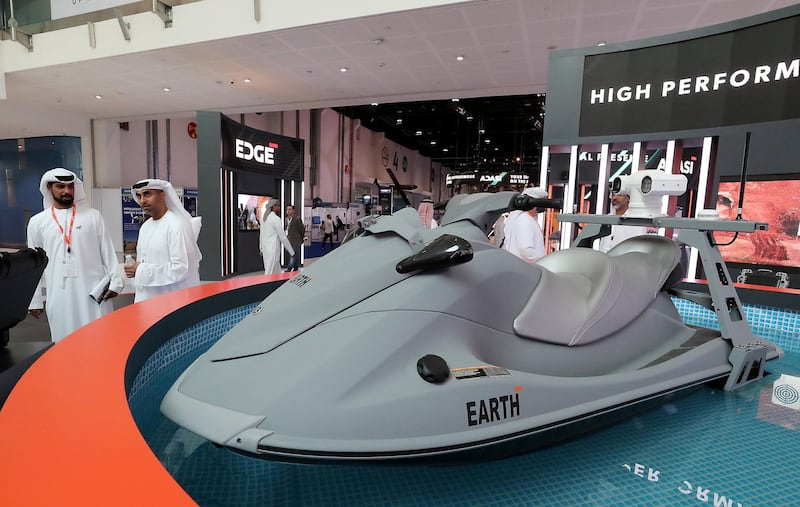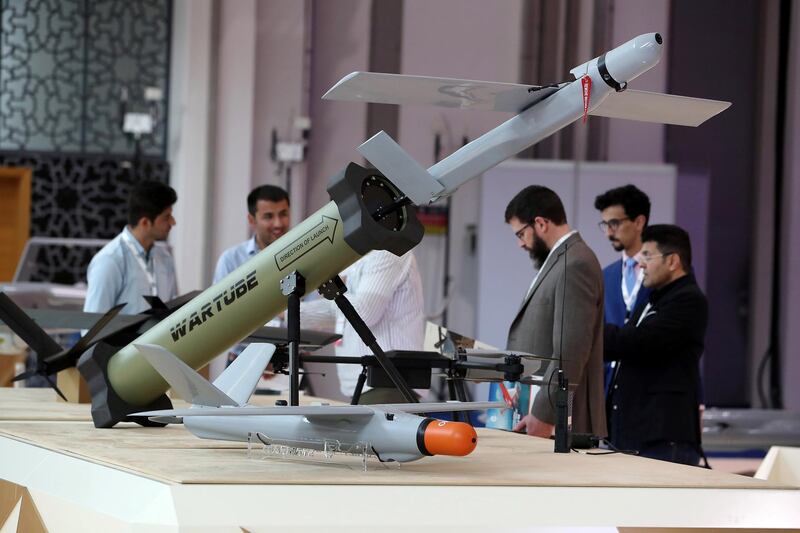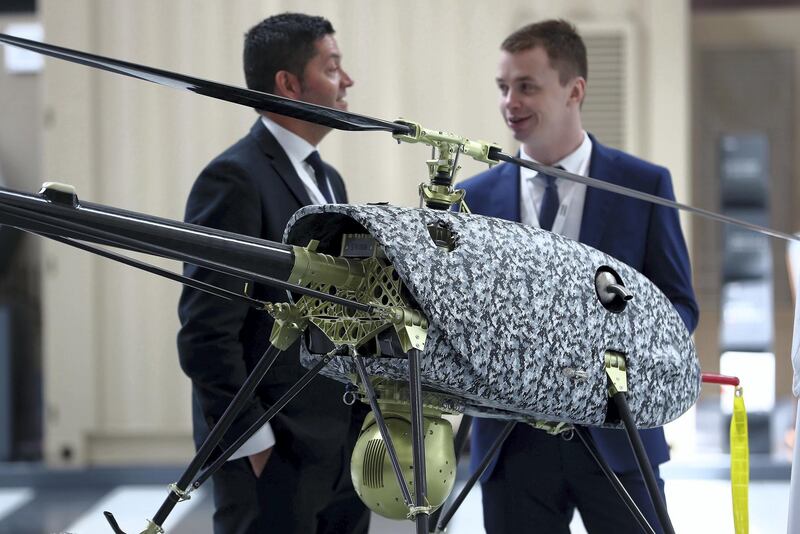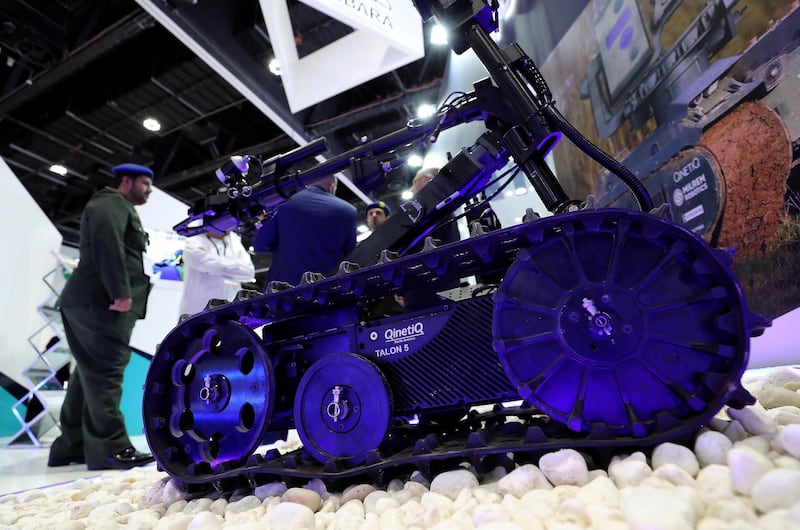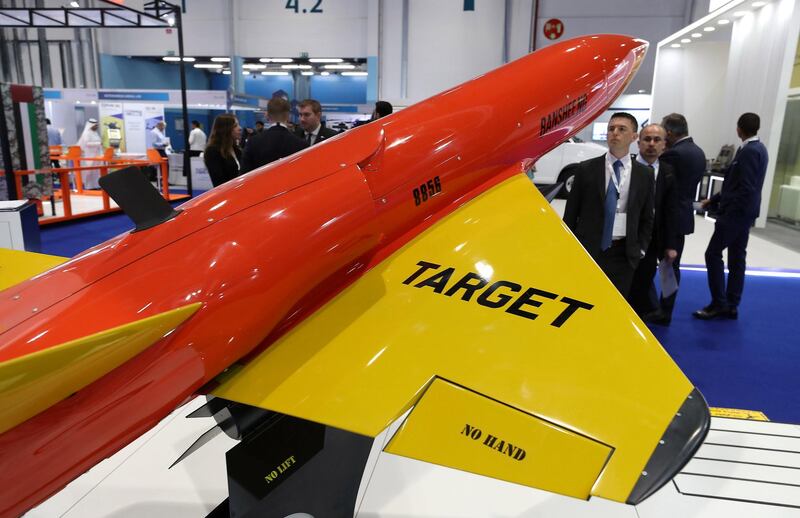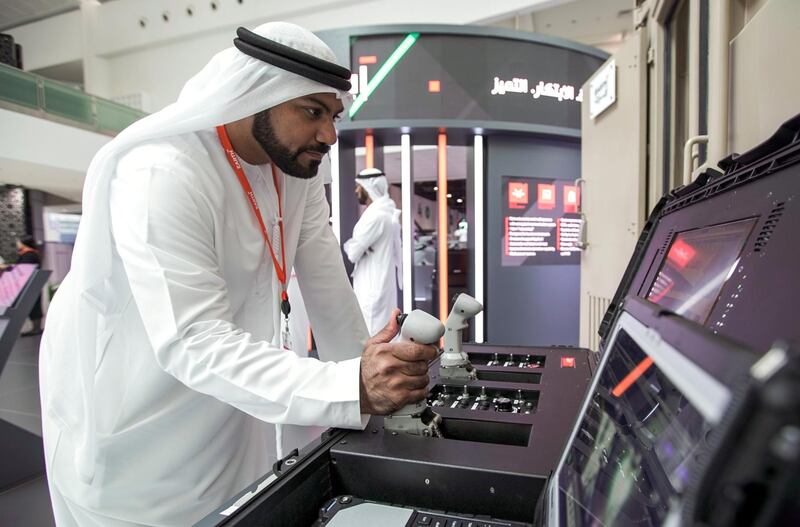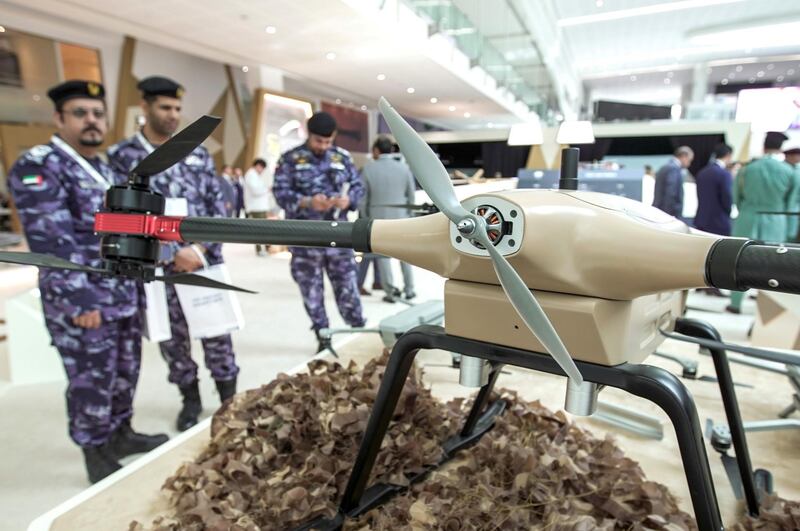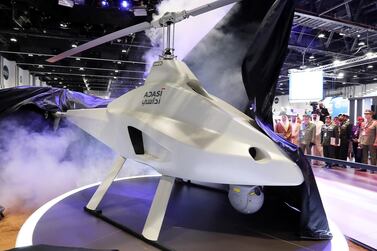They can drive an injured soldier to safety, swarm like insects and surf the world’s oceans — and they are neither living nor controlled by humans. This isn't a riddle; it’s the drone technology on display in Abu Dhabi this week.
Umex 2020 is under way in the capital, with 163 companies from 63 countries displaying their wares for the booming drone industry, providing a sense of where the technology is at amid its rapid evolution.
While the first unmanned aircraft was built by Americans during the First World War (nicknamed ‘The Bug’, it never saw combat), it took nearly another century for drones to become a mainstream part of modern warfare. With the advent of artificial intelligence and computer vision technology, the last two decades have seen a rapid rise in research and development and procurement of unmanned vehicles for both military and commercial use.
Umex organisers are expecting as many as 18,000 visitors, an increase of more than 50 per cent from the previous event held last year. Worldwide, military spending on drones is expected to reach $98 billion in the next decade, according to a recent report from the Teal Group, an aerospace and defence market analysis firm.
Investing in future technology “has become the most important area of investment, making a difference in the future progress and prosperity of countries”, Mohammed Al Bowardi, Minister of State for Defence Affairs, said in his opening address at Umex on Sunday.
Hyundai’s HR Sherpa is one of the most jarring sights at this year’s exhibition, because for all of the talk by the auto industry to bring driverless cars to roads, this system is getting fairly close. The ground vehicle is a driverless tank that can be operated by remote control or autonomously. It can carry up to 600 kilograms and attack if fitted with remote weapons systems, or be used for surveillance or transporting injured soldiers.
By sea, Boeing's Wave Glider is an autonomous, solar and wave-powered marine vehicle that can gather data for security or scientific purposes that were once too expensive and challenging to tackle. For government customers in the region, "critical infrastructure such as oil and gas pipelines, naval ships and military installations" can be monitored by the Wave Runner, James Buescher, head of business development at Liquid Robotics, the Boeing-owned company that makes the drones, told The National.
Oman's Research Council uses the Wave Glider in the Gulf of Oman, to help scientists and academic researchers better understand the flora and fauna in its waters.
China’s domestically manufactured helicopter drones are capable of swarming in formation, with payloads of grenade launchers and automatic weapons to perform co-ordinated strikes.
A spokesperson for Ziyan, the maker of the technology, told The National that swarming — mimicking insects — can overwhelm a target. The company is promoting autonomous take-off and landing, with up to 10 drones capable of engaging in co-ordinated combat at the same time, and the ability to carry different weapons systems.
The exhibition is decidedly geared towards the defence sector as broad use of consumer UAVs or drones-as-a-service has yet to take off. Regulations and infrastructure are failing to keep pace with advances in technology. But there are signs that this is about to change.
Two of the world’s biggest technology companies, Amazon and Google, have been developing drone delivery systems for much of the last decade. Since 2013, Amazon has been developing its own drones to deliver packages weighing up to 2kg, in 30 minutes or less, to customers within a flying range of 24km, according to CB Insights.
Last year, Abu Dhabi National Oil Company, in collaboration with France’s Total, said it planned to deploy drones and unmanned vehicles to collect 3-D seismic data as it expands its search for new oil and gas resources throughout the emirate of Abu Dhabi — the first time such technology will be used in the region
More recently, DJI, one of China’s biggest consumer and commercial drone manufacturers, adapted its agricultural spraying drones to spray disinfectant in potentially Coronavirus-affected areas.
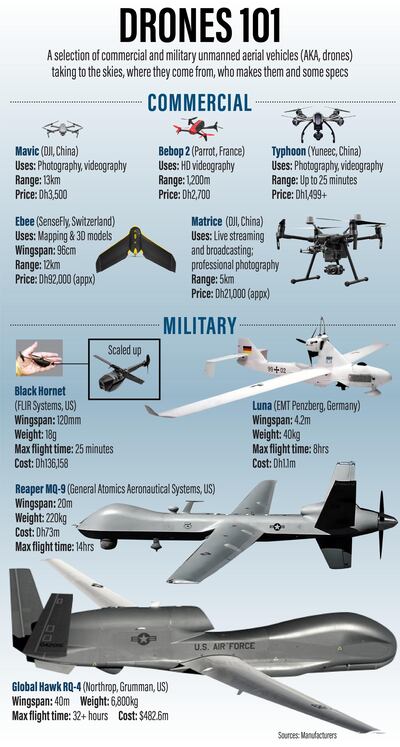
"Drones can dramatically improve how China attempts to kill the virus in public areas: they can cover far more ground than traditional methods, while reducing risk to workers who would otherwise spend more time potentially exposed to both the virus and the disinfectant," the company told The National this month.
Loudspeakers were mounted on drones to help disperse public gatherings in crowded places, and other drones flew banners advising people on how take precautions, to curb the spread of COVID-19 in China.
“Assisting on the containment of a disease, while ensuring safety to personnel, was very difficult to do in the past,” said Romeo Durscher, senior director of public safety integration at DJI. “This was a complete grass roots movement. Users inspired us to take action, and it was worth the effort.”
